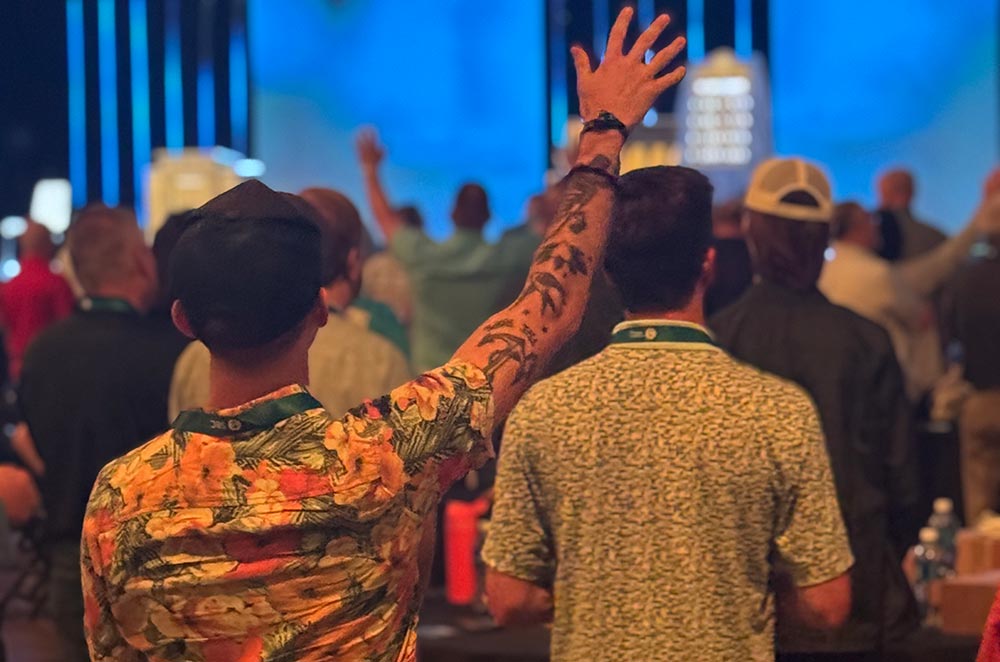By Josh Ellis & Keelan Cook
The following article is part of a collective resource for considering your church’s current practices in light of COVID-19. This collection of articles is designed to help pastors, church leaders, and church members as they forge a path forward. The work of the Great Commission doesn’t stop for a storm, a shooting, or a pandemic. However, the methodology of transmitting the gospel will look different in each of those cases and as cultural and regional contexts play a role in shaping the channels through which the gospel most easily flows. There is a lot to unpack here.
With this collection of articles, our friends over at UBA Houston are attempting not to prescribe a particular program or method, but to encourage leaders to constantly reevaluate their circumstances through a healthy theological framework as new information becomes available.
What a difference a weekend makes. Last Thursday night, I (Josh) wrote that I supported local health and government officials as they encouraged public gatherings of no larger than 250 people. As I write late into the following Monday night, the President of the United States and the Center for Disease Control have asked the country to limit the size of gatherings to 10 people, and Harris County Judge Lina Hidalgo in coordination with Houston Mayor Sylvester Turner has ordered that all bars and clubs be closed, all restaurants be limited to pickup, delivery and drive-through orders, and that personal travel be severely limited while also asking that people avoid crowds of any size wherever possible.
As I did last week, I support those recommendations.
UNDERSTANDING URGENCY AND DELAYED GRATIFICATION
In systems theory, one of the biggest “AHA!” moments for me (Josh) was learning about the delay between changing part of the system and its overall effect on the system. Think of the thermostat in your house. It’s a tad warm in your living room, so you turn the AC down a degree. Ten minutes later, it still doesn’t feel cool enough so you turn it down two more degrees. Ten minutes later, still not satisfied, you turn it down another three degrees. Now that your house has had twenty minutes to run the AC, the temperature in the whole house begins to settle down the one degree you initially desired. You become engrossed in your favorite television show and twenty minutes later, wonder why it’s freezing in your house. You neglected the delay in the system.
Social media will be ablaze with comments about how these new restrictions aren’t making any difference and to prove their point, pundits will cite day old statistics. People will claim that these steps are overblown and premature and that since we only have less than 40 cases in the greater Houston area, we should wait to put these measures in place. People forget that someone can have the virus and transmit the virus to others days before they themselves show symptoms of any severity, and that the symptoms can be confused with the common flu and allergies (something Houstonians are very familiar with). These people are neglecting the delay in the system.
If you want to see an excellent model of how these extreme social distancing strategies work, I suggest you check out this Washington Post article “Why Outbreaks Like Coronavirus Spread Exponentially, and How to “Flatten The Curve” by Harry Stevens.
Through illustrations like this, one can quickly see through another social media fallacy: that this is not a matter of urgent concern. This virus is not a liberal conspiracy, a hoax, or something to be equated with the flu [in 2017-2018, 45 million people got the flu and 61,000 died from it, resulting in a .001% mortality rate, and while of course tragic, COVID-19 currently has a mortality rate of 1.4% – 3% with no proven vaccines available]. The urgency of this matter is precisely related to the delay in the system: by putting these measures in place now, they slow the spread of the virus, buy time for tests to be distributed and for the healthcare system to develop treatments. Let’s not neglect the delay.
NOW IS THE TIME TO MAKE CHANGES IN OUR CHURCH PRACTICE.
We cannot delay in our response to this moment. Adjusting church practice to align with the present realities is attempting to hit a moving target. We are in a moment where information changes hourly, and we must adjust to making decisions under those circumstances, at least for the foreseeable future.
This requires humility in our deliberations and estimation of how others respond, but it cannot result in delay. We must plan with eyes wide open, responding to wise counsel from the medical community, submitting to government authorities as directed by Scripture, and taking seriously the important themes in Scripture concerning the nature and purpose of the church.
This post originally appeared on Union Baptist Association’s site.,
Published March 20, 2020



